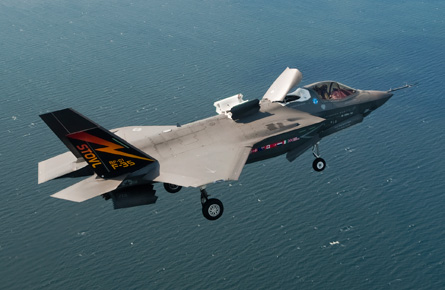Lockheed Martin is standing by the concurrency strategy and the quality of the F-35 structural design, despite a new critique by the head of the programme's acquisition office.
After two major restructurings since 2009, the programme office is still discovering new areas of concern. An investigation launched after bulkhead cracks were discovered last November found several new "hot spots" of structural weakness in all three variants, the programme office confirmed.
Because the programme is building hundreds of aircraft concurrently with development and testing, the costs of retrofitting completed aircraft is so high it "sucks the wind out of your lungs," Vice Adm David Venlet told an interviewer recently. The extra costs mean the programme should slow the rate of production, Venlet added.
When asked for comment, Lockheed challenged the programme office's conclusions in a rare departure from a normally shared public narrative between the F-35's lead contractor and customer.

Regarding the new structural problems, Lockheed downplayed their significance.
"None of the required changes are safety issues, affect aircraft performance or are beyond normal expectations," Lockheed said.
Although Venlet has now called the concurrency strategy a "miscalculation", Lockheed still argues it is less expensive overall than the alternative, which is to develop, test and build the aircraft in a linear sequence.
Lockheed also noted that concurrency of development and production is a common tactic. "The concurrency costs for F-35 continue to reduce as experienced by all fighter aircraft development programmes," it said.
The company also challenged Venlet's plan to slow production to reduce the costs of retrofitting new aircraft.
"The savings associated with building at increased rates will continue to mitigate the diminishing concurrency costs," Lockheed said.
It also suggested it is cheaper to build F-35s at higher rates and pay the concurrency bills than delay replacements for the existing fighter fleet.
"The cost to upgrade and maintain an ageing fleet of aircraft the programme was designed to replace should be considered in this decision," Lockheed said.
Source: Flight International























